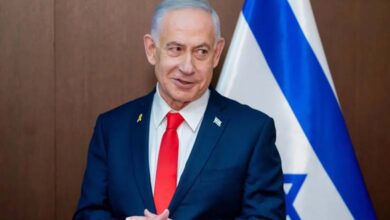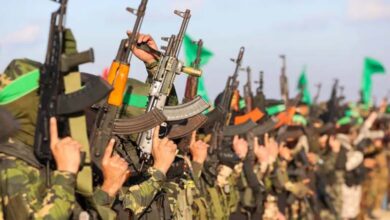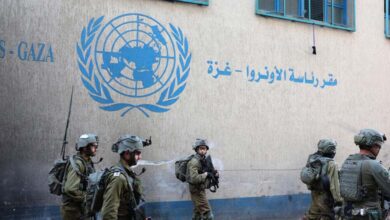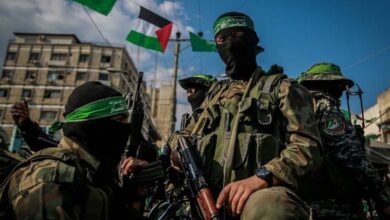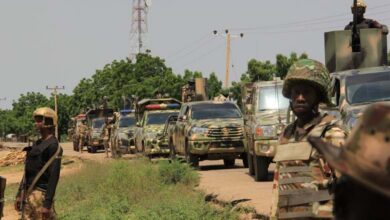Confusion Among Palestinian Factions in Lebanon Delays Weapons Handover in Camps

The Ain al-Hilweh camp in Sidon is considered the most complex, due to the presence of multiple factions, radical Islamist groups, and armed elements operating outside any authority.
-
Who is behind the Palestinian factions’ rejection of the outcomes of Sharm El-Sheikh?
-
To fuel conflict and tensions, why did Palestinian factions reject the outcomes of Sharm El-Sheikh in Egypt?
Local Lebanese media reported that the planned handover of weapons in Palestinian camps, scheduled for Monday, was not carried out as expected. Internal factors contributed to the delay — notably, the awaited return of Azzam al-Ahmad, Secretary of the Executive Committee of the PLO and overseer of the Lebanese file, to Beirut to continue consultations regarding the implementation mechanism. Additionally, Palestinian factions reportedly need more time to conduct internal discussions and agree on a unified and collectively binding position.
Political forces in Lebanon, including Fatah and the Palestinian Liberation Organization (PLO) factions, are facing unprecedented confusion regarding how to approach the June 16, 2025 deadline for disarming the camps. This follows a Lebanese-Palestinian agreement reached during President Mahmoud Abbas’s visit to Lebanon on May 21, 2025, as part of Lebanon’s national plan to extend full state authority over its territory — including the camps — and ensure a monopoly on arms.
-
Palestinian factions support Houthi terrorism
-
The actions of Hamas and Palestinian factions have revealed their links with Iran, against Arabs
According to local reports, major factions such as Hamas, Islamic Jihad, the PFLP–GC, and as-Saiqa have held a series of meetings that produced a joint Palestinian vision, intended to address refugee issues in Lebanon comprehensively. The document will be presented to other factions to achieve broader consensus.
However, this vision reportedly does not explicitly call for disarmament, instead advocating for the “regulation and control” of weapons through a joint security force, under the supervision of the Palestinian Joint Action Committee, in coordination with the Lebanese Army and its intelligence services.
-
Trump Administration Considered Relocating One Million Palestinians to Libya
-
Cairo called the Palestinian factions to continue discussions on elections
The plan also fails to specify the PLO as the official negotiating body, although leaders of the Palestinian Forces Alliance implicitly acknowledge its authority, while calling for reforms within the PLO and the inclusion of all factions under its structure.
According to the Lebanese outlet An-Nashra, the confusion stems from two main issues:
- A lack of internal coordination among the PLO factions, with the Joint Action Committee — the usual framework for handling political, security, and service-related issues — remaining inactive. No preparatory meetings were held to formulate a common position aligned with the Lebanese state.
- The absence of a clear mechanism for the phased handover of weapons, despite a proposed timeline starting with camps in Beirut (due to their proximity to the airport), then moving to al-Jalil in the Bekaa, Beddawi in the North, Bourj al-Shamali, al-Rashidiyeh, and al-Bass in Tyre, and finally Mieh Mieh and Ain al-Hilweh in Sidon, the most difficult.
-
Activists: The Muslim Brotherhood caused the division of the Palestinian people and spreads lies to maintain their bases
-
Netanyahu rejects any Palestinian sovereignty over Gaza after the war
The Ain al-Hilweh camp is deemed the most challenging, due to its complex mix of factions, Islamist groups, and unruly elements. Still, according to Brigadier General Sami Abu Afsh, national relations advisor at the Palestinian Embassy, dialogues are underway to hand over weapons to the Lebanese Army.
Opinions among camp residents vary: some see the presence of arms as a daily threat, while others fear losing protection in the absence of clear security guarantees from the Lebanese state. Many stress the need for a unified Palestinian-Lebanese understanding to avoid potential instability within the camps.
-
The Palestinian Authority pledges to hold Hamas accountable after the end of the war.
-
Why do Palestinian experts exclude the implementation of the Sharm El Sheikh agreements?
Palestinian sources affirm that factions are cooperating with the Lebanese state on this matter, within frameworks aimed at protecting civil and social rights, avoiding the use of force, and ensuring no violations occur inside the camps — all under clearly defined terms.
The Palestinian weapons issue in Lebanon dates back to the Cairo Agreement of 1969, which allowed the PLO to hold arms in the camps. This agreement was officially revoked in 1987.




